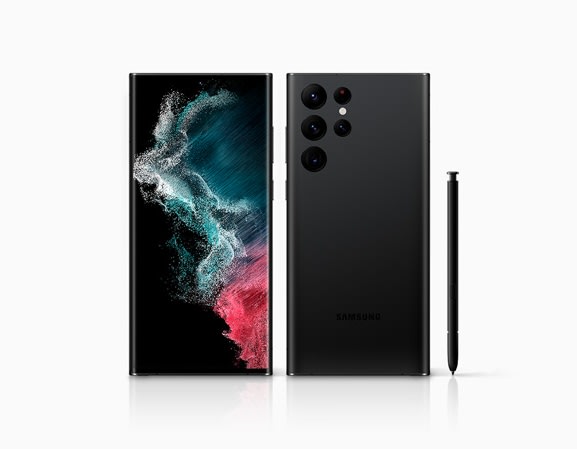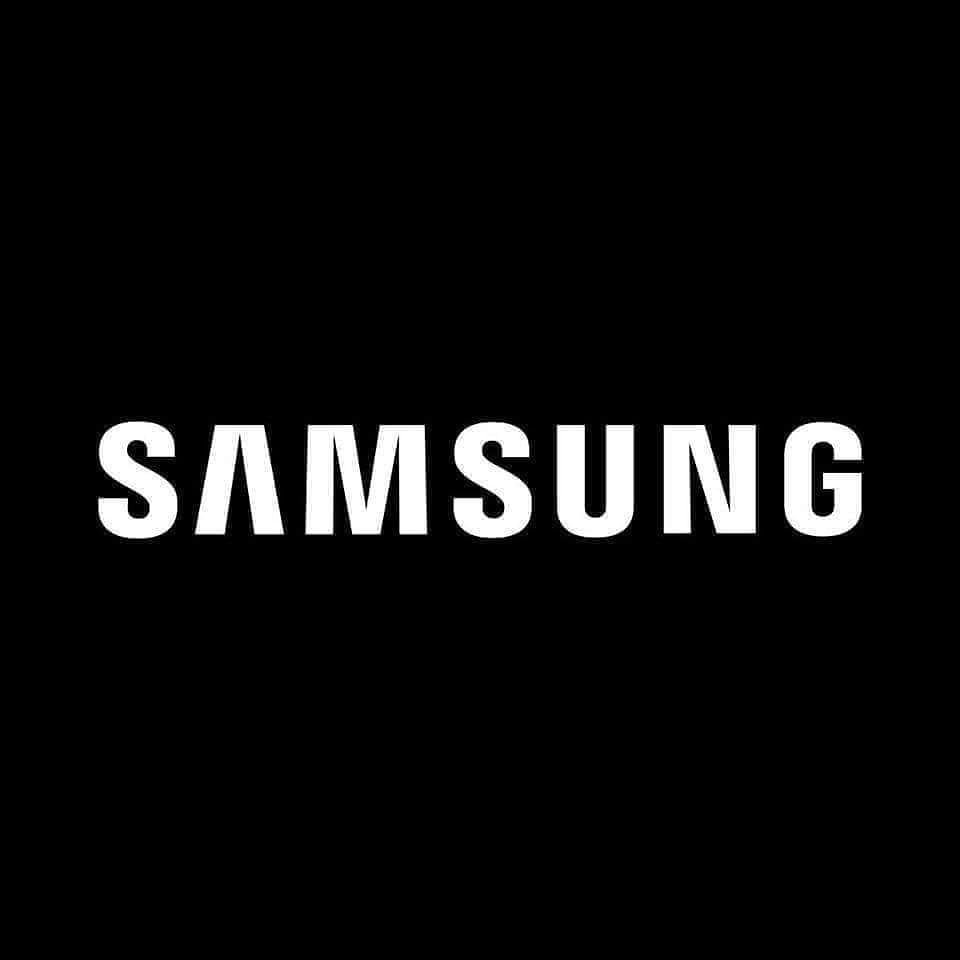There are several smartphones on the market that have pretty decent camera quality, ranging from those suited for landscapes to low-light photography. But we understand not everyone has the time to compare each specification and figure out which one best suits their perception of value.
Without further ado, let us introduce to you the current best smartphones suited for photography with a fair price, all available to buy in Malaysia.
Table of Contents
- List of Best Smartphone Camera for Photography in Malaysia
- Smartphones vs. DSLRs
- Are smartphones good enough for photography
- What smartphones do photographers use

Editor
Jodee Tan chevron_right
Table of Contents
10 Best Smartphone Camera for Photography in Malaysia
- iPhone 13 Pro - Best overall smartphone for photography
- Samsung Galaxy S22 Ultra - Best phone for night/low light photography
- iPhone 13 Pro Max - Best smartphone for gaming and photography
- Vivo X70 Pro+ - Best smartphone for photography and video
- Xiaomi 12 Pro - Best smartphone for landscape photography
- Xiaomi 11 Lite 5G NE - Best budget/cheap/affordable smartphone for photography
- OPPO Find X3 Pro - Best smartphone camera for microscopic photography
- Huawei Mate 40 Pro - Best smartphone for macro photography
- Sony Xperia 5 II - Best smartphone for street photography
- Realme 9 Pro Plus - Best mid range smartphone for photography

Why It’s Our Top Pick
The iPhone 13 Pro has no doubt received many positive reviews for its all-rounded performance that’ll suit any user. Notably, it has a 6.1-inch Super Retina XDR display screen, which is slightly smaller than the iPhone 13 Pro Max. It is powered by the A15 Bionic chip and ProMotion technology, which delivers better quality graphics and an overall great user experience!
Moreover, with a refresh rate up to 120Hz, this iPhone will automatically adjust based on the tasks you are doing (e.g. power-saving when you’re not gaming), which is why everything seems smooth.
Not only that, but the iPhone 13 Pro is also available in different memory capacities, starting from 128GB and all the way to 1TB. With everything said, this phone suits users who are looking for phones with higher memory capacity or those who do not prioritise that.
Overview
Discussing the camera quality; the iPhone 13 Pro has a quad Pro 12MP camera system, which consists of Telephoto, Wide and Ultra Wide cameras. With the iPhone 13 Pro, you are now also able to shoot macro videos with features such as slow motion or time-lapse. Its wide camera also has a LiDAR scanner and a great sensor which helps in night photography.
The newly introduced Telephoto camera comes with 3x optical zoom, which is great for portraits or landscapes far away.
You can also record up to 4k quality on the iPhone 13 Pro and it can be edited in ProRes! With the Smart HDR 4 software, it automatically refines the lighting of your photos for each person in frame.
Performance:
Users commended the iPhone 13 Pro for having an improved battery life in comparison to previous iPhone models. It has satisfactory camera performance too. However, some users pointed out that the cameras would automatically switch between lenses. Additionally, the ProMotion technology does not run at 120Hz for all applications.

If you’re looking for an Android alternative, the Samsung Galaxy S22 line is the newest of the Samsung Galaxy line-up. To put, the Samsung Galaxy S22 Ultra has a pro-grade camera, offering a bigger variety of camera settings and lenses.
Overview
So, what does the Samsung Galaxy S22 Ultra’s Pro-grade Camera entail? It comprises of a quad camera system which is a 108MP Wide-Angle camera, 2 Telephoto Cameras (10MP 3x Optical Zoom and 10MP 10x Optical Zoom), and 12MP Ultra-Wide camera. With everything coming together, the camera system is primed for night photography. Especially with its improved pixel sensor and Super Clear Glass & Lens, it helps you to capture your shots clearly with minimal noise disruption in frame.
How it works is that before you snap your shot, the Samsung Galaxy S22 Ultra’s Adaptive Pixel will automatically shift between modes to ensure optimal lighting and speed to capture brighter, vibrant photos. The Auto Framing feature also ensures that the subject of your video or photo stays in focus.
Zooming into the Samsung Galaxy S22 Ultra’s 40MP selfie camera; it has a Director’s View feature that allows you to record from multiple angles all at once (yes, think of it as though there are CCTV cameras on you). In terms of post imaging, you will have access to an Expert RAW app that allows you to save the RAW files directly, making it easy to transfer your files or share.
Aside from camera specs, the Samsung Galaxy S22 Ultra is powered by a 4nm processor. It has a 6.8-inch Dynamic AMOLED 2X display screen with 120Hz refresh rate. And to help you get through a photoshoot day, it has a 5000mAh battery capacity.
Performance
The camera quality of the Samsung Galaxy S22 Ultra has improved in comparison to its previous models. This model is particularly commended for its low-light photography and zoom feature. Even without opting for Night Mode, this model reportedly performs well in low light.
Users have mentioned that the software is responsive, no lagging, and great for daily usage. The fast-charging is pretty decent too. However, some have complained that the audio could be louder.

Gaming often drains a smartphone’s battery life quickly. And so it would be important to get a smartphone that has a decent battery life, as well as a speedy processor. Hence, the iPhone 13 Pro Max is the option to consider!
Overview
In comparison to the iPhone 13 Pro, the iPhone 13 Pro Max has a bigger-sized screen which is a 6.7‑inch Super Retina XDR display. With ProMotion technology, it contributed to a more responsive user experience.
Moreover, the bigger screen size makes it easier to navigate around games. Having a bigger screen is a pro, especially for games that require more on-screen control or games that have smaller wordings. Speaking of which, the phone is powered by a A15 Bionic chip, contributing to a faster performance.
Now let’s get back to cameras! The iPhone 13 Pro Max has a Pro camera system – in fact, its camera specs are the same with the iPhone 13 Pro with its Telephoto, Wide, Ultra-Wide cameras, and LiDAR scanner.
Aside from the additional option to adjust your camera settings via the Photographic Styles, you can also make use of the Night Mode for better low-light photography. When it comes to filming, the Cinematic mode helps keep your subject in focus. You are also able to record your videos in 4K Dolby Vision HDR quality.
But perhaps the iPhone 13 Pro Max stands out in comparison to its other models for its battery life. Other notable features include a IP68-protected casing as well as support for its MagSafe accessories; in other words, fast wireless charging compatibility.
Performance
Aside from being notably praised for its long battery life, reviews have also commented that the cameras and video recording quality are stellar.

If you’re interested in Vivo phones, know that they are also known for their camera quality. Just so happen that, the Vivo X70 Pro+ has been commended for photography too.
Overview
A standout feature of Vivo smartphones is its ZEISS camera system. It introduces a T* coating, which reduces stray lights and shadows from interfering with the photos that you capture.
The Vivo X70 Pro+ also has a dual main camera system. The cameras include a 48MP Ultra-Wide Gimbal Camera, 50MP Ultra-Sensing GN1, and 2 Telephoto cameras (12MP and 8MP). With the horizon level stabiliszation feature, the camera is able to level itself and prevent you from capturing blurry photos.
There’s also a VIS 5-Axis Ultra Stable Video feature – which is an anti-shake system to prevent shaky video recordings. Moreover, its built-in sensor also ensure that you capture your shots even during night or low-light. Not forgetting; the rear 12MP Pro Portrait Camera actually has a 60x HyperZoom.
Performance
With the Vivo X70 Pro+, users have commended this smartphone for its vibrant display screen and that it is fast-charging compatible. Though the hardware of this smartphone is great, users have felt torn over its software issues (its UI and bloatware).

Looking to go and capture some of those amazing, breathtaking nature sceneries? The Xiaomi 12 Pro’s main camera has stood out for its performance in landscape photography due to its wide angle lens.
Overview:
Let’s talk camera specs. The Xiaomi 12 Pro has a pro-grade triple camera, which includes a 50MP telephoto, 50MP wide angle, and 50MP ultra-wide angle cameras. It also has a 1/28'' Sony IMX707 Sensor, which helps to capture more brightness in your photo. With the new Xiaomi ProFocus AI tracking technology, moving subjects can still be captured clearly on screen.
In terms of the front camera, itIt has a 32MP in-display selfie camera for your selfie or group-fie taking needs.
This smartphone has a 6.73-inch WQHD+ 120Hz AMOLED display screen with AdaptiveSyncPro. In other words, that’s a great display screen with a refresh rate that automatically adjusts itself based on what you are doing on the phone in order to save power!
In terms of running everything, the phone is powered by the Snapdragon 8 Gen 1 processor, and boasts a 4,600mAh battery for your day-to-day tasks. Boosting the battery life further is its AdaptiveCharge technology which learns the user’s daily usage patterns to prolong battery life and ensure safe charging.
For audio listeners and music-listening enthusiasts, the Xiaomi 12 Pro also has a quad speaker stereo with built-in independent dual tweeters and dual woofers!
Performance:
Users have praised the fast-charging feature of the Xiaomi 12 Pro. Though the main camera stands out, there have been mixed reviews on its ultra-wide and telephoto cameras. Moreover, note that the Xiaomi 12 Pro also has a curved AMOLED screen, but may be harder to adapt to for those who are used to viewing photos on flat screens.

Looking for a budget smartphone to get on with your photo-taking skills? A great option from Xiaomi is their 11 Lite 5G NE!
Overview:
The Xiaomi 11 Lite 5G NE has a triple camera, which includes a 64MP main camera, 8MP Ultra-wide camera, and 5MP telemacro camera alongside a 20MP front camera. In order to let you capture shots from day to night, iIt has a Night Mode function for users to capture their photographs and videos in low light or during night time.
Interested in videography? There are also AI Cinema effects available to shoot better videos.
Here’s a basic rundown: This phone has a 6.55-inch FHD+AMOLED DotDisplay screen. It also has a 90Hz refresh rate and 240Hz touch sampling rate to allow for a smooth navigation around. There are also special viewing features such as the Reading mode 3.0, Sunlight mode, and 3.0, 360° ambient light sensors which contributes to more comfortable viewing (or reading) experience!
Under the hood, the Xiaomi 11 Lite 5G NE is powered by the Snapdragon 778G chipset and a 4350mAh battery, which is fast-charging compatible (at 33W).
Performance:
Users have commented that the Xiaomi 11 Lite 5G NE is an all-rounder smartphone at an affordable price. It has a decent chipset, boosting it to flagship performance despite it being a budget option. Another notable review is that the quality of the stereo speakers are satisfactory.
Though its main camera has been praised for its quality, the ultra-wide camera has received mixed reviews. Not only that, but there have been complaints on this smartphone’s software, more on due to the performance of its interface.

Microscopic photography is something new, and not many smartphones have adopted this yet. Well, the OPPO Find X3 Pro is ahead of its game with its microlens camera (as well as several other camera functions for you to check out!).
Overview:
The OPPO Find X3 utilises a quad camera setup which includes a 50MP Wide-angle Camera and 13MP Telephoto Camera; the latter is great for group photos or landscapes. This phone also stands out with its newly introduced 3MP Microlens Camera which allows users to zoom into their subject up to 60x closer; kind of – like thoselooking through a microscope for science experiments.
It also has a 32MP front selfie camera that has night mode support, ensuring that your selfies can be taken even in low light. And if you’re worried about not getting the right results, know that its AI Scene Enhancement technology automatically identifies the setting of your photo/video, and adjusts colour tones accordingly.
The OPPO Find X3 is powered by the Snapdragon 888 chipset and has a display refresh rate that automatically switches between 1Hz-120Hz depending on what you are doing on your phone. This helps to maintain your battery power and contribute towards a smoother performance.
Performance:
In general, OPPO Find X3 has been highlighted for its two main camera lenses. The functionality of the microlens camera has been debated on, - but it is something new! Not only that, but this smartphone has also been praised for its fast-charging battery, making it easy to charge anywhere and anytime on the run.

If you’re looking for a smartphone solely for its camera function, then the Huawei Mate 40 Pro could be an option for you to consider!
Overview:
In terms of its setup, the Huawei Mate 40 Pro has a 50MP Ultra Vision camera, 20MP Ultra-Wide Cine camera, and a 12MP Telephoto camera. It has a Steady Shot feature helps you record steady videos, even when you or your subject is moving; truly useful even for macro photography which requires a very steady hand often.!
Love your selfies? The phone has a 13MP Ultra Vision Selfie Camera, which also supports features such as 4K video, ultra-wide view recording, front and rear dual-view video, and slow-motion.
The Huawei Mate 40 Pro is powered by a 4400mAh battery which is SuperCharge (fast-charging) compatible for an all day out in the sun. It has a 90 Hz screen refresh rate and 240 Hz touch sampling rate – contributing to a greater and more efficient user experience.
Moreover, with its intuitive gesture sensor and upgraded NPU, it allows users to experiment with AI touch-free interactions. Now, moving your hand left or right allows you to flip through your photo gallery or an e-book on your smartphone easily.
Performance:
Huawei Mate 40 Pro has been highlighted for its battery life and charging speed as well as quality stereo speakers. But the real standout is its camera quality. If you are looking for a smartphone solely to replace buying a camera, this would be an option to consider. Note that the Mate 40 Pro uses Huawei’s native AppGallery for apps, so some setup to get Google apps is required.

Looking for a more compact-sized phone to take with you on your travels? The Sony Xperia 5 II might just be the trick!
Overview:
The Sony Xperia 5 II is the most compact model of the Xperia line that’s also future-proof with its 5G-compatibilityle. It has a 6.1-inch CinemaWide™ FHD+ HDR OLED display screen. With a 120Hz Refresh rate, it contributes to a responsive user experience.
Borrowing the technology from Alpha professional cameras, the Xperia 5 II provides the speed and accuracy to capture each moment with optimum focus and exposure. Thanks to its triple lens camera setup (16mm ultra wide-angle, 24mm wide-angle, 70mm telephoto with the 3x optical zoom), this smartphone helps you to capture immersive landscapes and, portraits, as well as the option to zoom into the distance.
Not only that; this smartphone has the ZEISS feature which provide a ZEISS T* coating for reduced reflection which results in greater image processing and quality. There is also a dedicated shutter button to take your photos instead of using the touch-screen button for an easier grip. And to complete your photography experience, the Xperia 5 II gives users the choice to opt between automatic settings or manually controlling the camera features (e.g. ISO, shutter speed, white balance).
Aside from its camera specs, the Xperia 5 II has front-facing stereo speakers with 360 Reality Audio feature, allowing for an immerse into ive entertainment experience.
Performance:
The Xperia 5 II is notably durable, being protected all around with Gorilla Glass 6 on the front and back. It has also been praised for its battery life and easy-to-navigate software. For camera functions, the smartphone stands out as users are able to truly adjust their own settings for photography to the core. Of course, users have the choice to opt for the automatic mode instead of manual which still provides stunning results..

Not too sure if photography is for you yet? Want to try your hand at producing higher-quality photography without breaking the bank? The Realme 9 Pro Plus may just be what you’re looking for!
Overview:
So, what cameras does the Realme 9 Pro Plus have? It consists of a triple camera setup which comprises a 50MP Primary Camera, 2MP Macro Lens, and 8MP Ultra wide-angle lens camera. It also utilises a Sony IMX766 imaging sensor, which helps to capture more light and deliver vibrant photos. It doesn’t stop there; said sensor with the Optical Image Stabilization feature prevents you from getting blurry shots.
Additionally, the AI Noise Reduction Engine 3.0 helps with image averaging and shape-adaptive de-noising – resulting in clear, crisp quality photos.
The Realme 9 Pro Plus also allows you to capture videos in low light, with its AI nightscape enhancement algorithm. Speaking of which, the 16MP selfie camera also works well in low light, with credit going to its Clear Fusion Algorithm feature.
Camera specs aside, the Realme 9 Pro Plus has a 6.4-inch Super AMOLED Display screen with a 90Hz refresh rate. It is also powered by MediaTek Dimensity 920 5G Processor and a 4500mAh battery which is also fast-charging compatible (60W SuperDart Charge). Additionally, the phone also has Dolby Atmos Dual Stereo speakers, providing a wonderful audio-listening experience.
Performance:
Not surprising, many users have commended this phone for the quality of its main camera (50MP). The ultra-wide and macro camera are also decent, but does not really standout.
Smartphones vs. DSLRs? (existing)
The truth is that mirrorless and DSLR cameras will still produce better images in comparison to a smartphone camera.
DSLR’s also allows more flexibility for the photographer with its interchangeable lenses. Although smartphone cameras have improved and many features have been introduced since, the built-in smartphone cameras still has its limitations (e.g. focal lengths) despite its increased megapixel quality.
Are smartphones good enough for photography?
The answer is: It depends on the model you are using and the quality of photography you are expecting.
Though a lot of smartphones do have built-in sensors and different camera modes (e.g. to suit low-light photography), the quality of photos taken by a smartphone camera will differ to the quality of a professional camera. For example, the zoom-in features of a smartphone camera will be limited in comparison to the interchangeable lenses of a professional camera.
The efficiency of smartphone photography will also depend on the time you’re willing to spend on the editing process. Due to its limitations, photographs taken on a smartphone may require more editing time in comparison to photographs taken on a professional camera.
What smartphones do photographers use?
So far, Apple’s iPhones have been praised for its camera quality. Even the team at ProductNation has taken note of the pleasing colour calibration on the iPhone. Other than that, notable smartphones are Google Pixel phones as a great all rounder as well as the Samsung Galaxy S line. which are notable for their night photography capabilities. Other brands we’d like to shout out are smartphones from HUAWEI and OPPO




